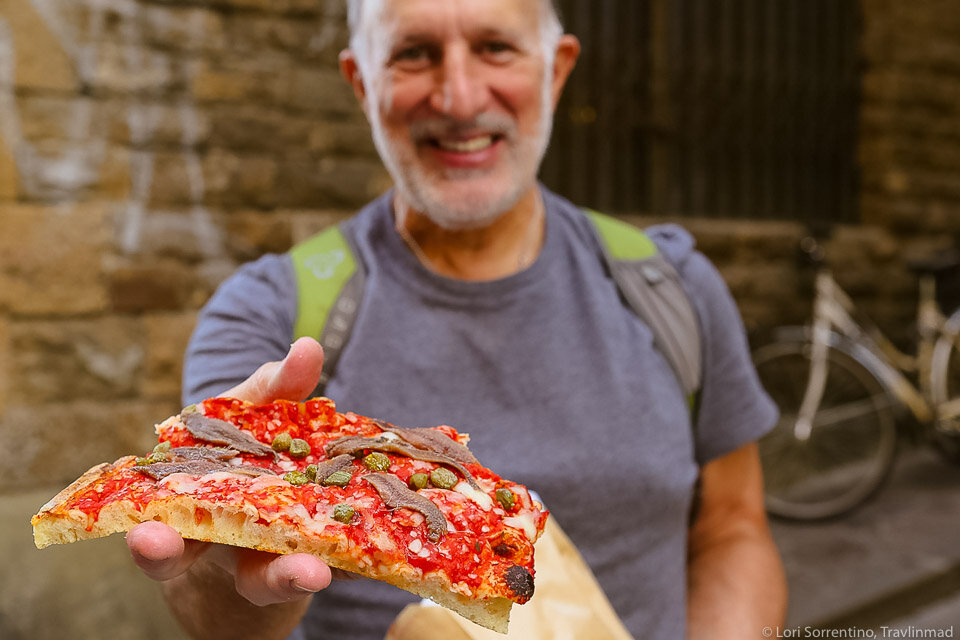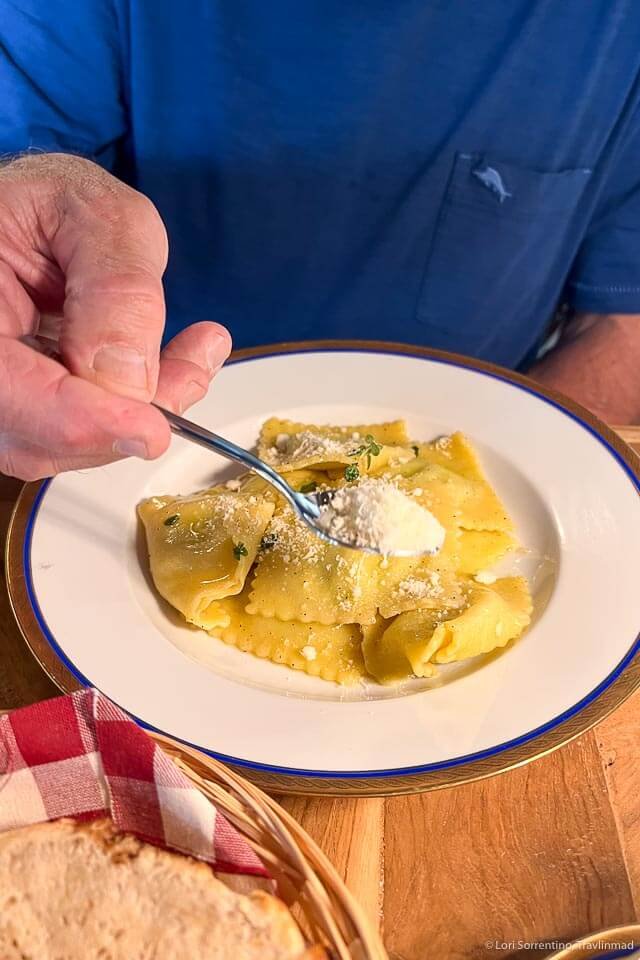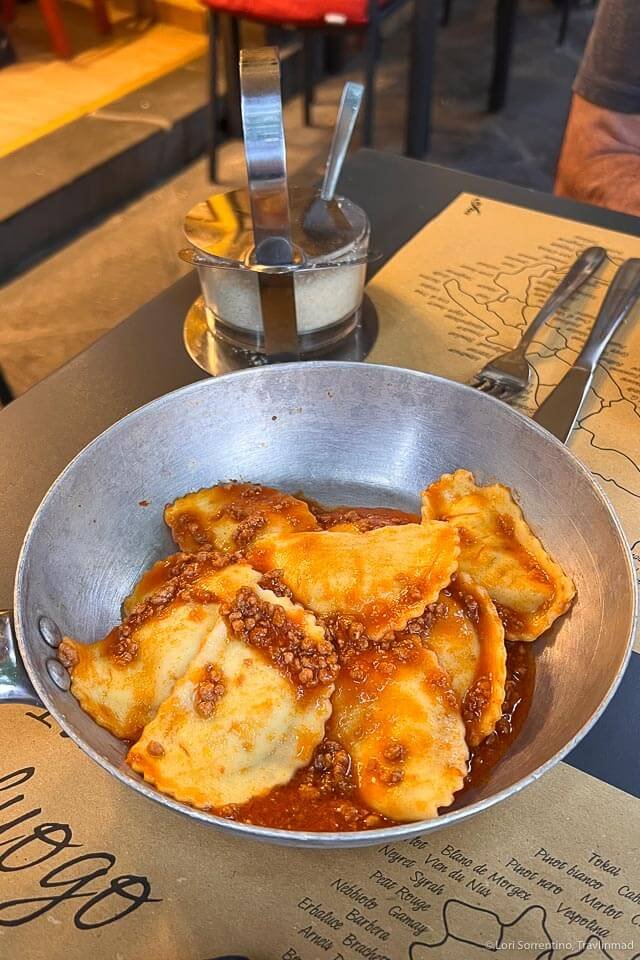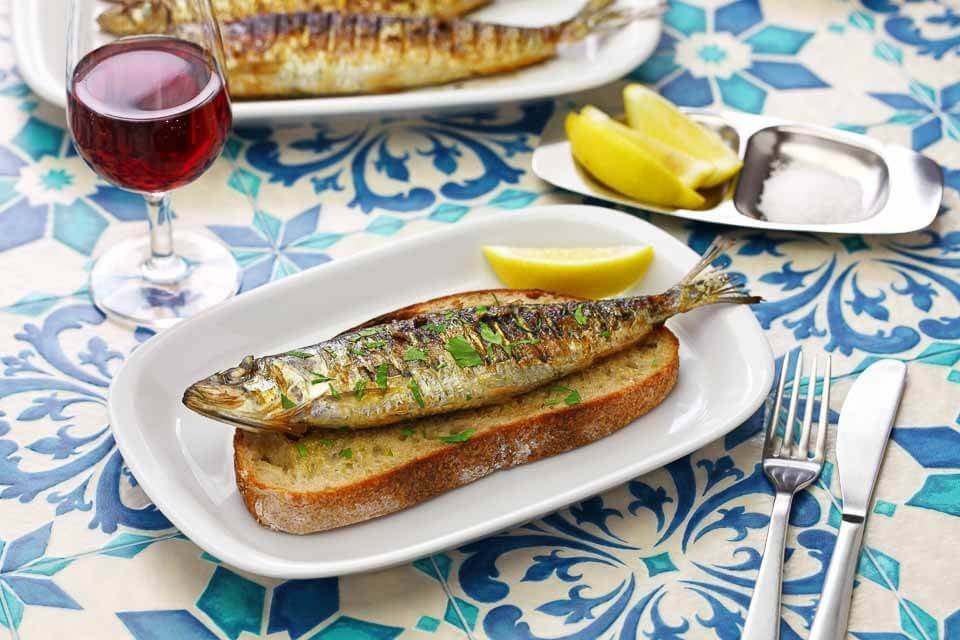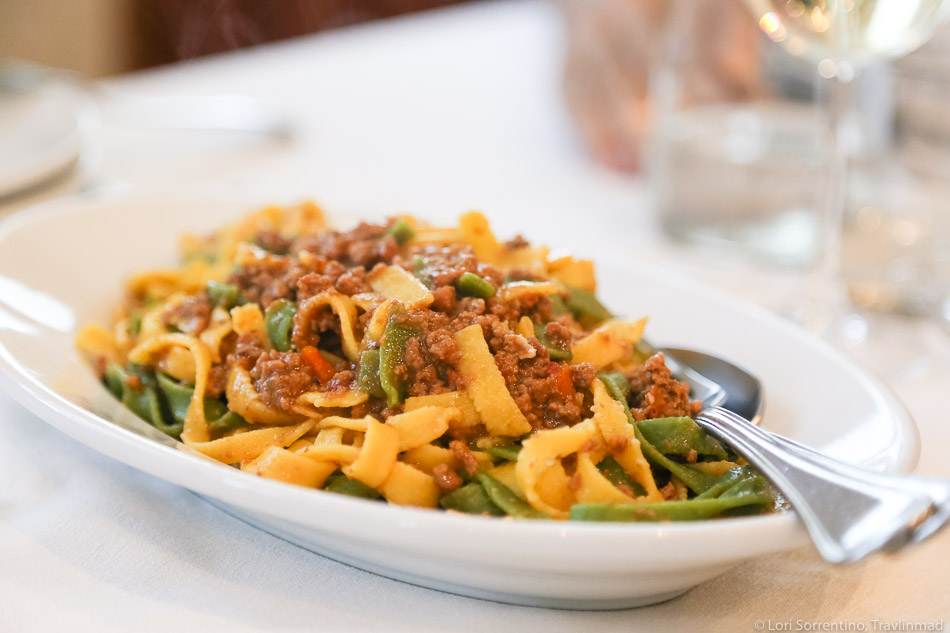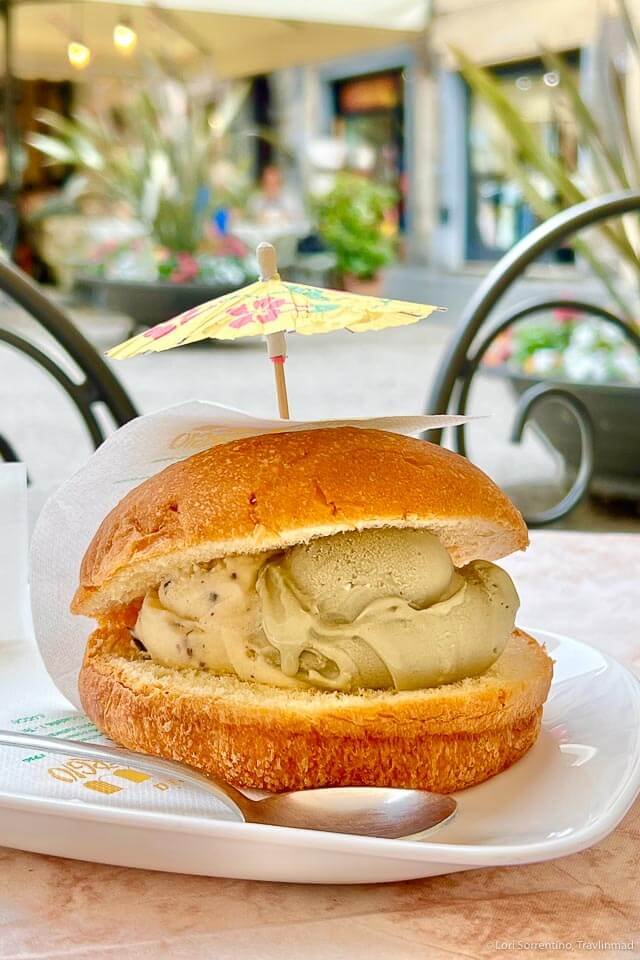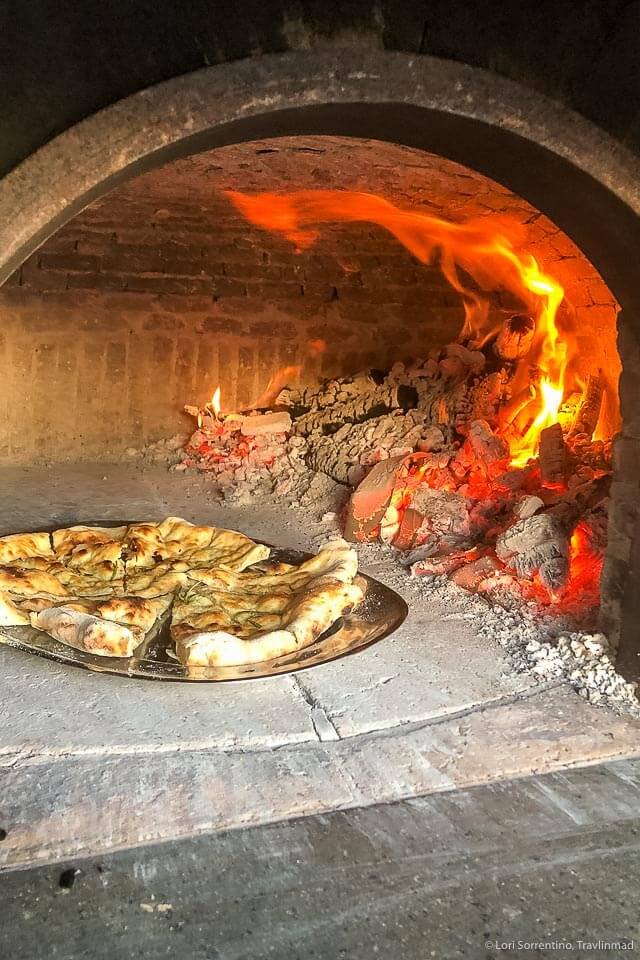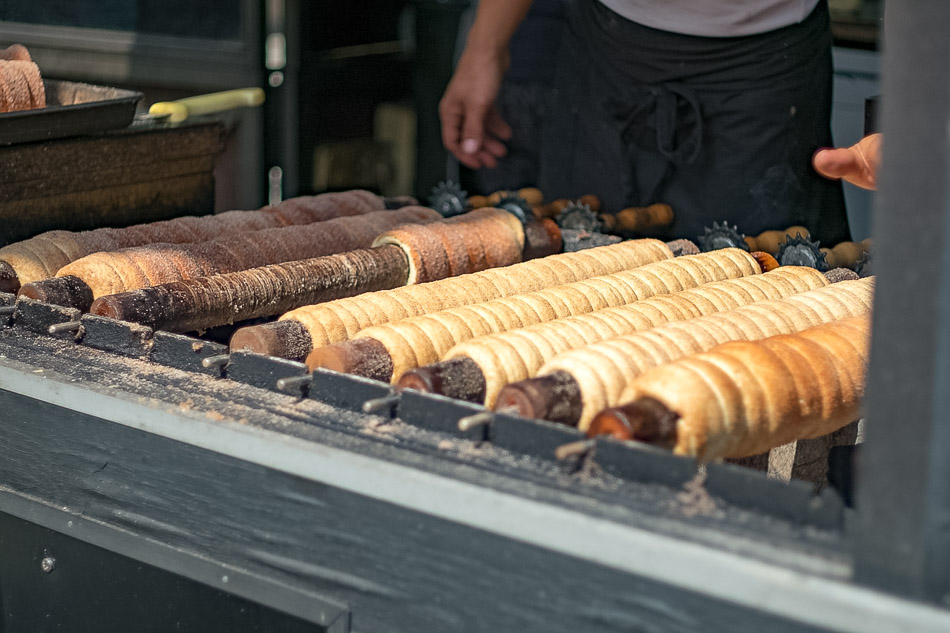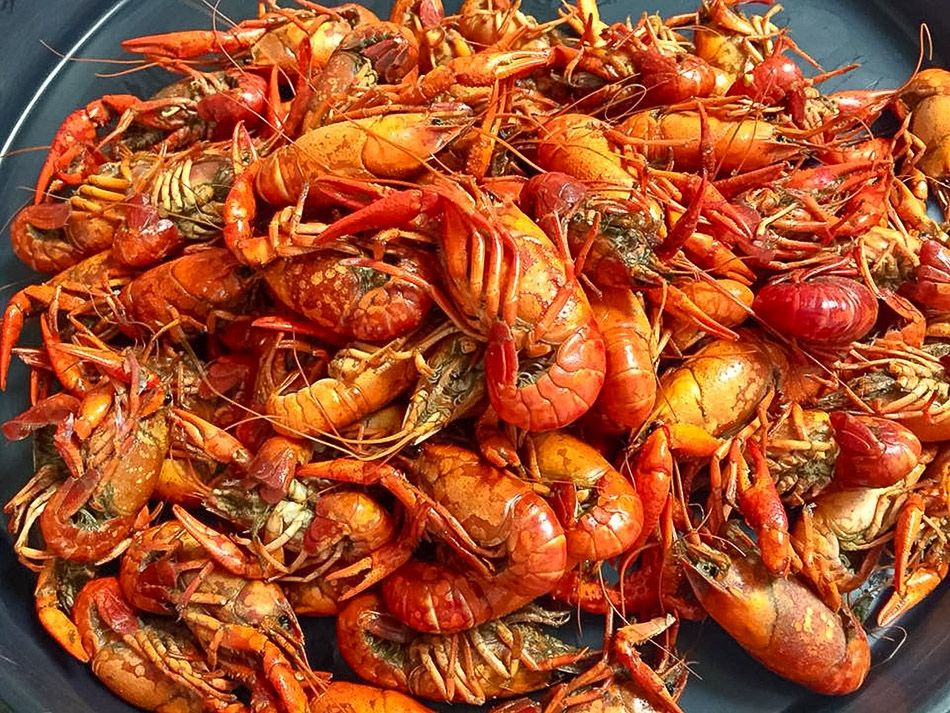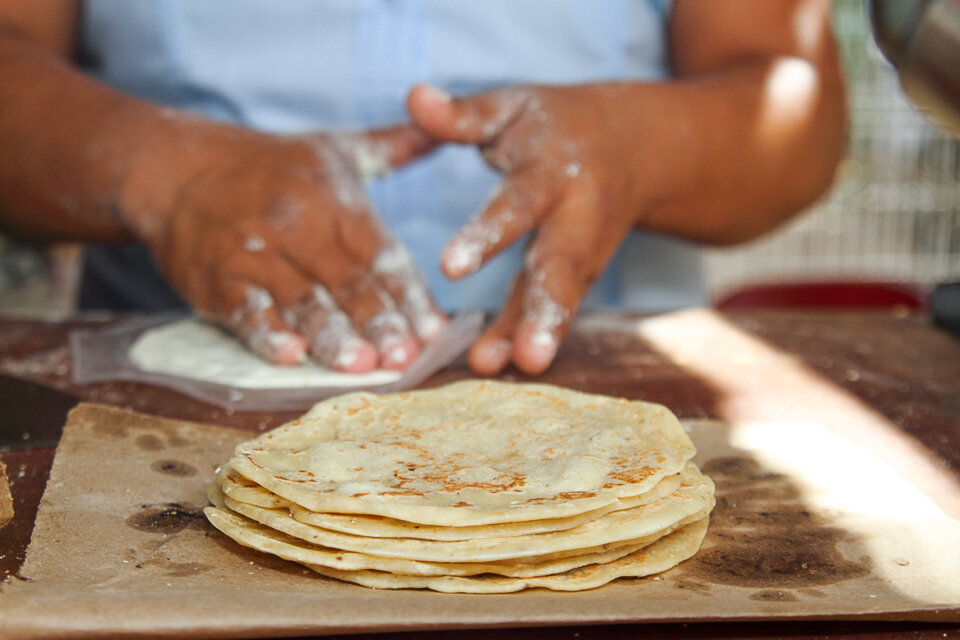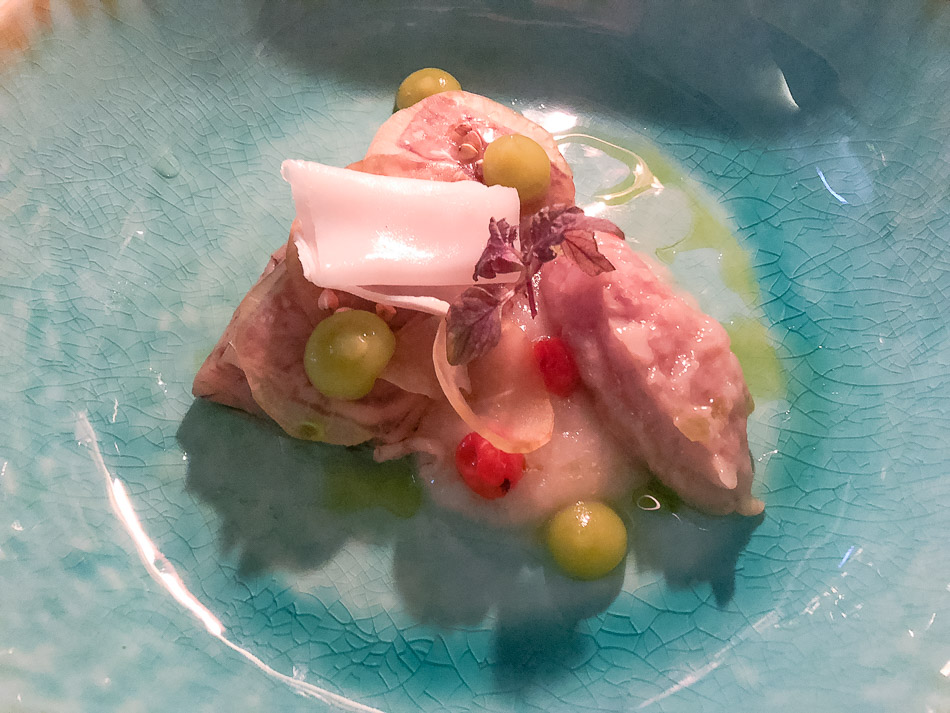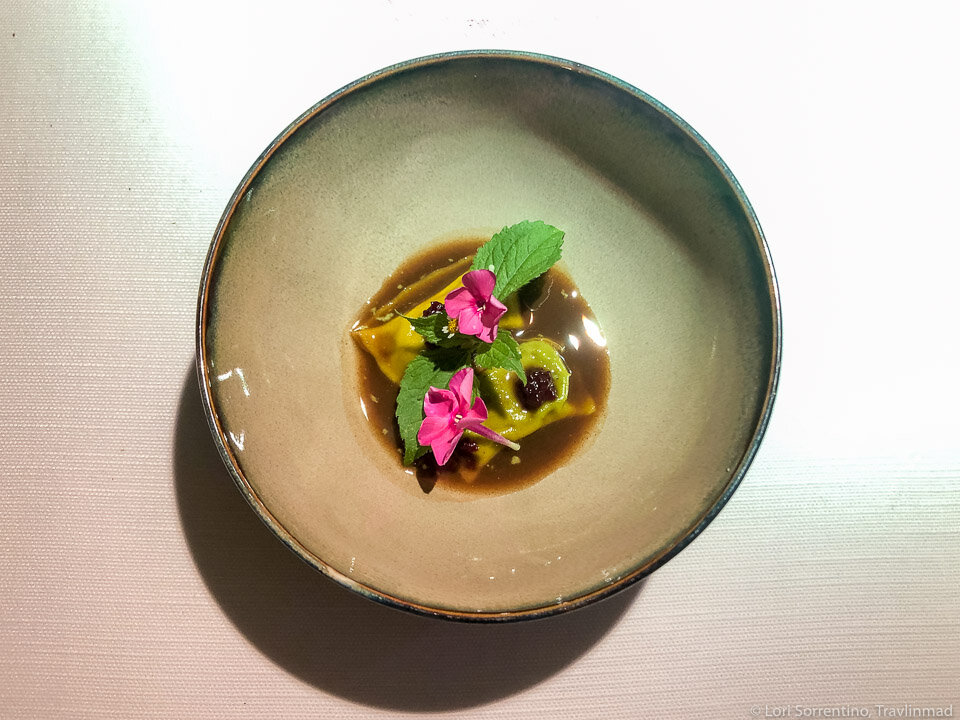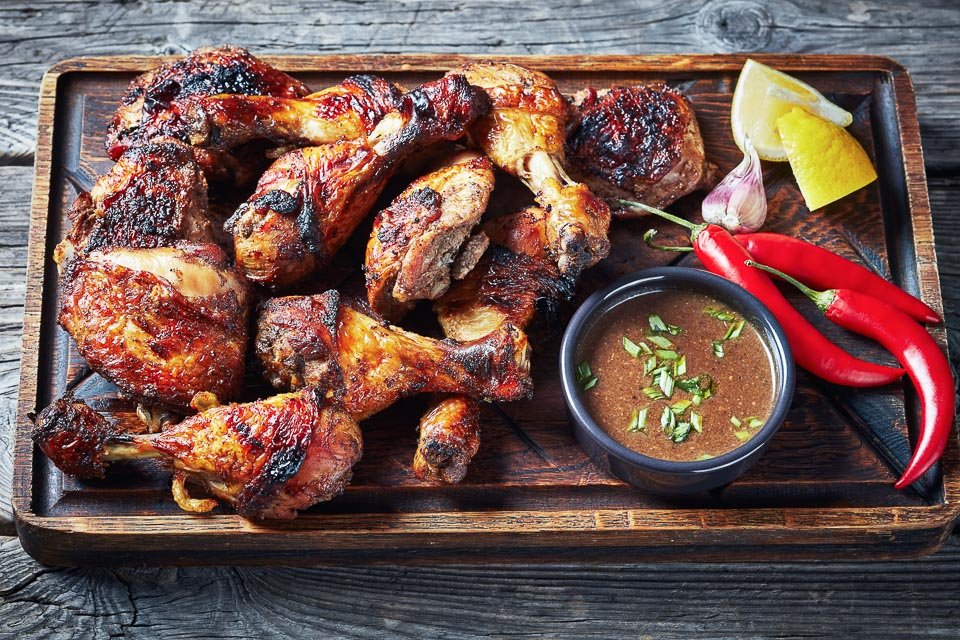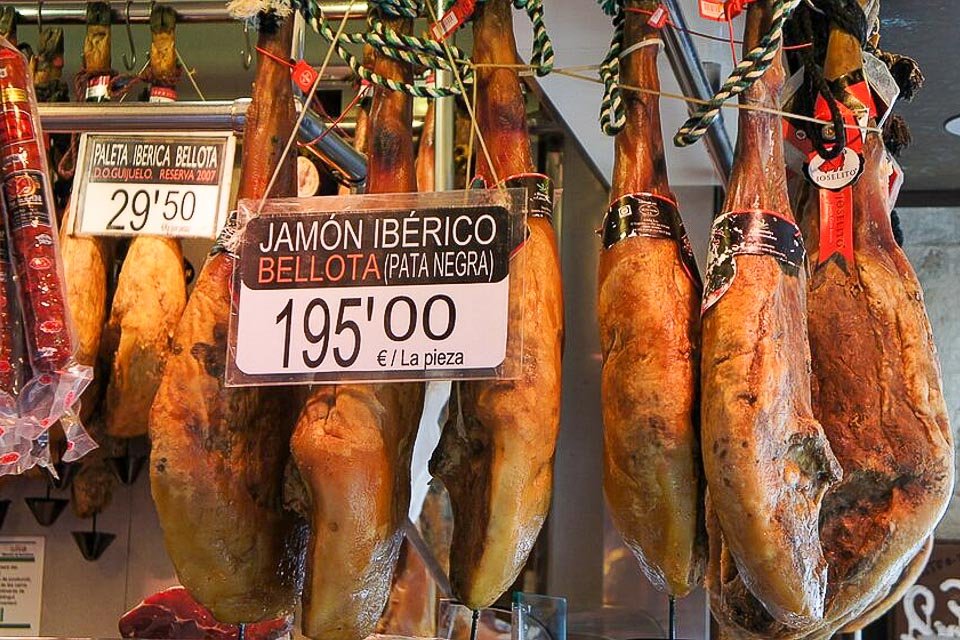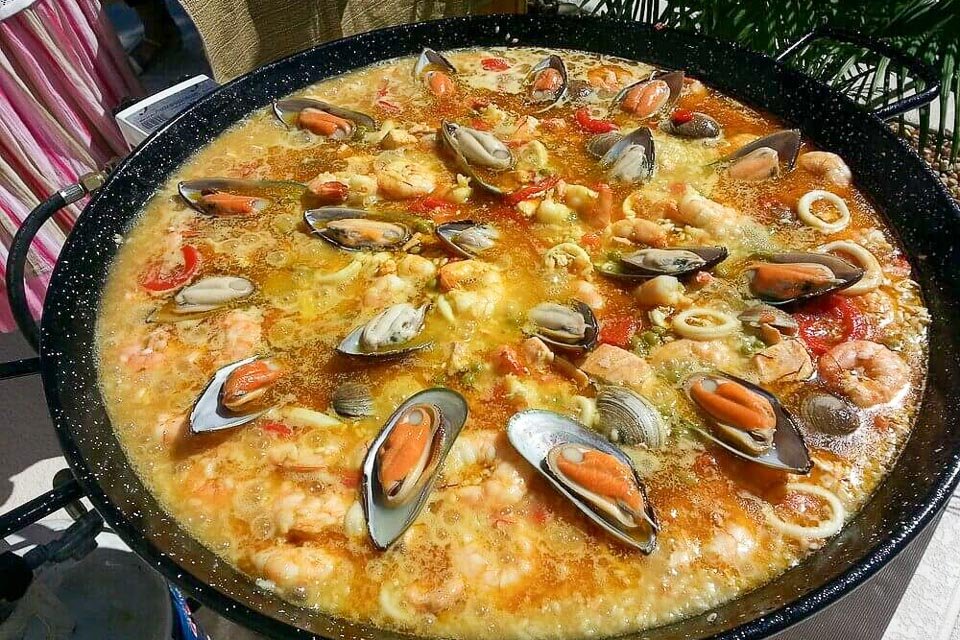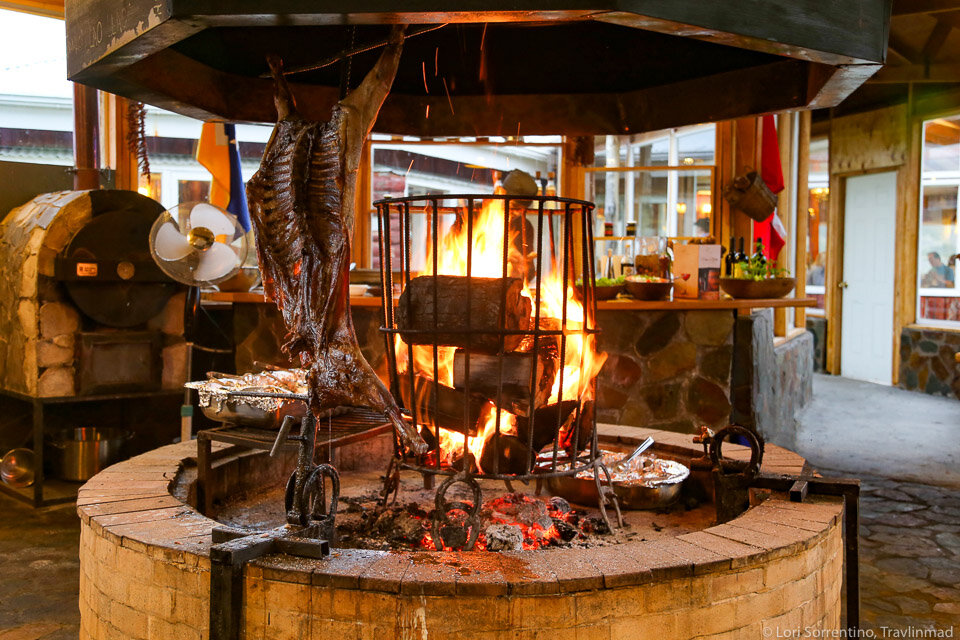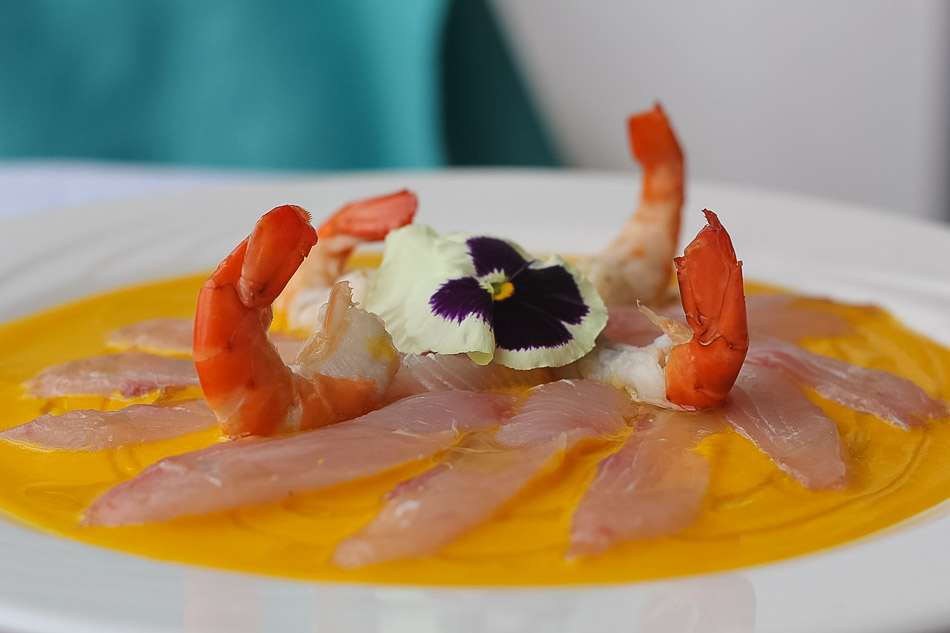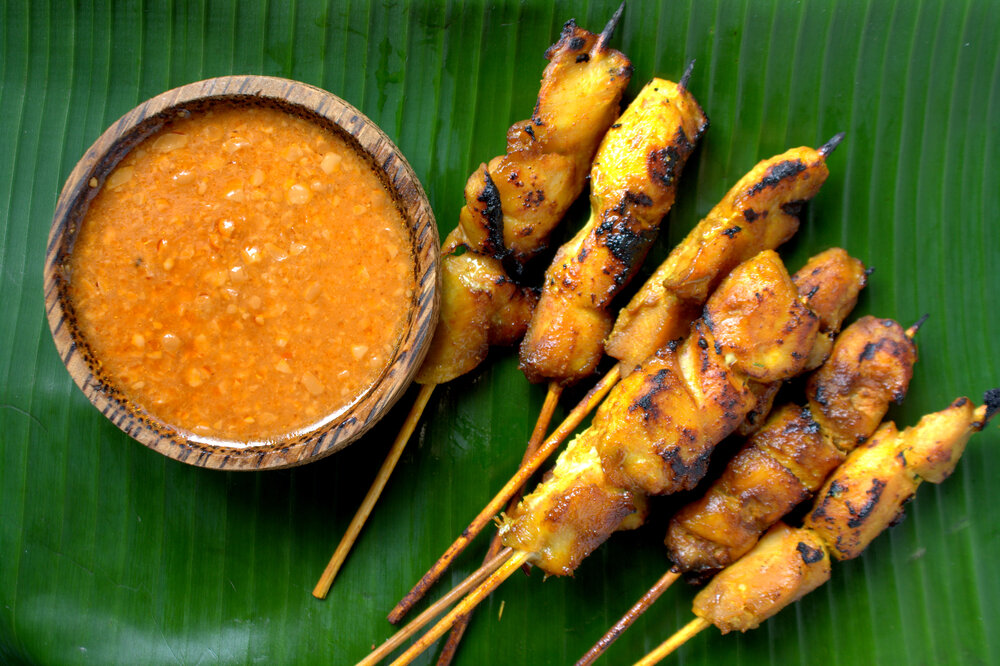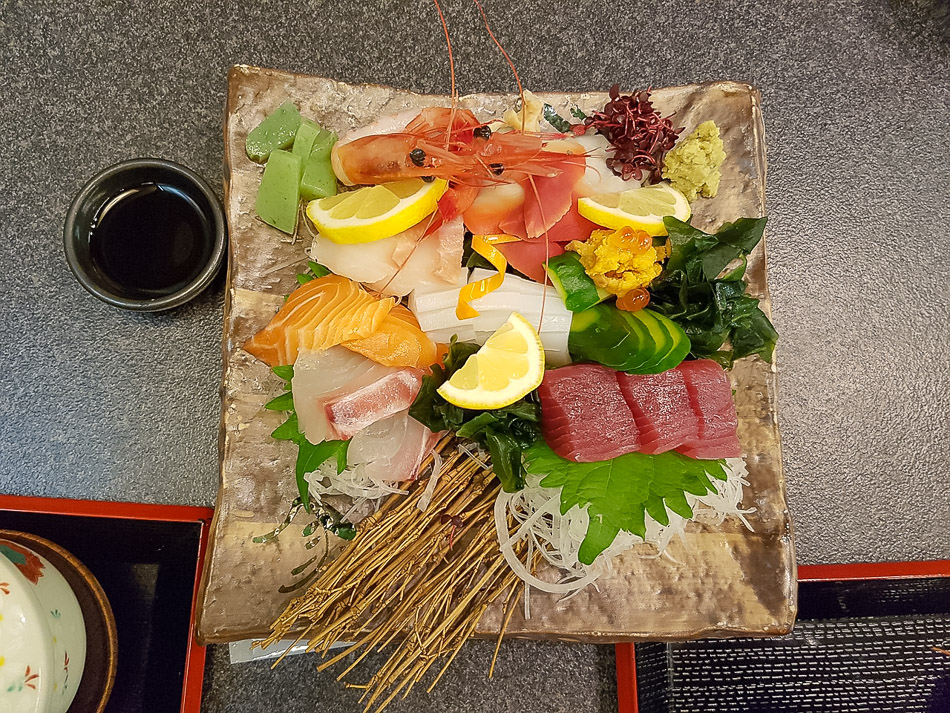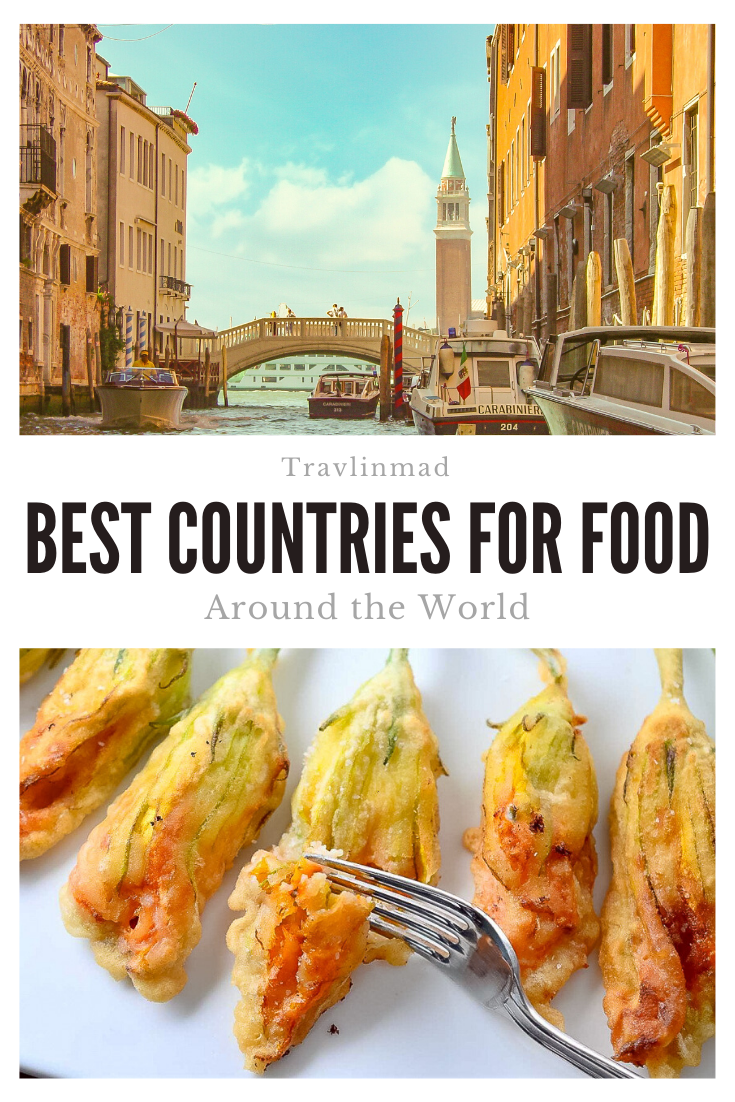14 Countries With the Best Food for Insatiable Foodies
As foodies and travelers, we long to visit the countries with the best food around the world. But how do you narrow it down?
What are the best countries for food? Here are our top picks — 16 places to travel just for the food (and wine)!
More than loving food itself, we love what food represents. Whether it’s a home-cooked meal in someone’s kitchen or a Michelin-star experience, food tells a story of the maker, their life and family, their traditions.
A good food experience can truly convey that story, with passion.
We write a lot about traditional foods of the world, but we don’t claim to be food critics. Too often it seems, food critiques can come off as too much food snobbery or pretense and not enough enjoyment.
And who can enjoy food when it doesn’t even feel approachable, right?
Table of Contents
Countries With the Best Food
Why Travel for Food?
14 Best Countries for Food
Countries With the Best Food
Do we get excited about food? Do we grin from ear to ear when we can actually experience a place through the food?
Do we spontaneously book plane tickets just from watching Chef’s Table or getting inspired by regional cuisine? Oh yeah!
Our food and wine palate becomes more refined, and like old friends, flavors help us recall our travels, the stories we’ve heard, and the memories we’ve made over some really great meals.
The more we travel, the more we realize how much good food is out there. So where should we all go next?
Just what are the countries with the best food around the world? Here are 14 of our favorites:
Why Travel for Food?
Food, wine, spirits, and beer all reflect things like the history, heritage, and values of a people and place. Ingredients reflect agriculture, which speaks to the history, economy, and by extension the local culture.
Food opens the vault to everything you want to know about a place.
It reveals what local people have been working at, growing, harvesting, and investing in…what they’re passionate about, what their grandparents may have started and they then continue.
It’s a beautiful thing.
Plus, food and wine just go together like peas and carrots, oil and vinegar, Bogie and Bacall and hundreds of other famous pairings.
Because they work together, they need each other, and both make the other shine brighter. While some destinations around the world are known for their food and others for wine, some also do both very well.
Places like central California, Chile’s Central Valley, and the Emilia Romagna region in Italy… they’re known for their unique local foods, and their wines are fantastic too. It’s almost too much to ask.
Everyone knows what to expect when you mention California cuisine. Or wines made in the Italian-style.
If you’re a foodie or wine lover and looking for some new places to explore, you may be familiar with some of these places, some of the best countries for food around the world.
Following are some amazing destinations around the world for food and wine.
Here’s hoping you’ll find some new ideas and exciting food and wine to please your palate. Cheers to that!
Here are some of the best countries for food, 14 of our favorite food and wine destinations for your culinary wish list!
14 Best Countries for Food
1. Portugal
With this coastal Mediterranean country having its moment, Portugal deserves the top spot on this list of best food countries in the world!
A favorite culinary tourism destination, Portugal is home to countless mouthwatering dishes.
Because of its privileged coastal locale, the Portuguese food culture is incredibly influenced by the Atlantic Ocean.
This, combined with the optimal weather conditions, results in opulent seafood dishes slathered in high-quality olive oil with a side of highly nutritional greens.
And, of course, there’s Portugal’s signature bacalhau and soups.
Wandering the streets of Portugal is a 360-degree experience. The country never ceases to amaze with its overwhelming architectural and natural beauty, enchanting street music, and lively atmosphere.
Top that with one of the oldest culinary cultures in Europe — its first recipe book dates back to the 16th century — and you have a travel destination like no other.
On every corner, you’ll find traditional Portuguese tascas (taverns) offering all kinds of delicious foods, from feijoada, a bean-based stew mixed with beef, pork, or seafood and a favorite among locals to francesinhas, a local culinary gem.
Originally from Porto, this beloved sandwich can be made of different types of meats, melted cheese, and spicy tomato sauce.
The Portuguese love sandwiches and the thin, marinated pork slices stuffed into a roll of fresh bread known as bifanas are another unmissable hand-held. It’s a popular lunch menu option in Portugal.
Seafood lovers will be in foodie heaven in Portugal, especially near the coast although you’re never that far away from the sea. Polvo à la Lagareiro, the traditional dish made from baked and roasted octopus and potatoes slathered in olive oil, is a must-try.
Another dish for seafood lovers is grilled sardines with bell peppers, on the barbecue of course. It’s one of the most traditional Portuguese dishes in Lisbon between June and September, when the city hosts Santo António.
But you can, and should, order a plate of sardinhas asadas anytime of year.
And no visit to Portugal would be complete with trying the local cod fish, bacalhau, a dish so closely tied with the Portuguese culture, you have to try it.
But try it everywhere so you’ll be sure and taste the subtle regional variations to this iconic dish!
Traditional Ragu Bolognese, Bologna
2. Italy
Italy has our hearts for food travel and we have sampled Italian food from coast to coast, you can read more about it here. The best way to explore the gastronomic regions of Italy is by car, we always rent a car for our Italy trips. There are a few places that are extra special and deserve a mention.
On one of our trips to Italy years ago we decided to explore Bologna and Emilia Romagna, and no trip has been the same since.
When we’re planning on where to go next in Italy our plans almost always include Bologna. Why? Simple, it’s the food.
Although Bologna’s secret is out, we still continue to find something new every time we go. Considered by many, even Italians, to be the culinary capital of Italy, Bologna’s food is truly unique among Italian regional foods.
If it’s your first trip to Bologna or you’ve visited before, dive right in. Dine at Osteria Da Me or a traditional lunch at Trattoria Serghei.
There are several pasta shops, known as sfogline, around the city where you can watch them being made fresh, pick out which pasta you want, then sit down to have your meal made in house.
Be sure and have a glass of one of the hallmark wines of Emilia Romagna like Pignoletto or a frizzante Lambrusco. have tortellini in brodo at Sfolia Rina,
The Bolognese are meat eaters and much of what is featured in the cuisine is made from various meat sources. Sausages, prosciutto, salamis, and mortadella, a cured pork sausage that is unique to Bologna can be found throughout the city.
For the best experience, head for the old city market area, the Quadrilatero where you can find just about anything on the Bolognese menu.
A must try food in Emilia Romagna is parmigiano reggiano, the “King of Cheeses”, made and aged under very strict government rules known as DOP (Designated Origin of Protection). Another DOP specialty food is traditional Balsamic di Modena aged for up to 25 years — it’s expensive and worth every penny. Try it on gelato, fruit or ricotta.
As you wander from shop to shop you’re likely to see small round flatbreads that are sometimes branded with a design. These are tigelle, a bread cooked in a cast iron mold like American cornbread, and are usually stuffed with a mixture of herbs, spices, pork and lard.
Looking to spend a few days in Naples? The local tomatoes here are so sweet and grown in the volcanic soil of Mt.Vesuvius.
Regardless of their size, they are deep red and delicious. And of course, they are the star of the show when it comes to pizza.
There’s no pizza in the world like Neapolitan pizza — it’s the best pizza in the world!
We’ve had so much good pizza in Naples and Sorrento but our favorite is still Pizzeria Da Michele, though the setting has a lot to do with it. We also had good pizza in nearby Sorrento at Pizzeria Basilico.
Sorrento has a number of really great restaurants, but a must-try is in the hills above Sorrento, the Michelin-starred Don Alfonso 1890 — truly a one-of-a-kind experience.
You can check out our favorite restaurants throughout Naples and the Amalfi Coast for the best suggestions.
For those with a serious sweet tooth, try the sfogliatella (pronounced sfoo-ya-dell), a shell shaped pastry that is the traditional dessert treat of Napoli and Campania. They can be found everywhere in bite size or larger ones you can share.
A ribbon of crispy thin dough holds all sorts of fillings from orange flavored ricotta, ricotta with citron, custards, chocolate, and almond. Buon appetito!
Tredlnik, a popular street sweet in Prague
3. Czech Republic
You might not think of Prague as a foodie destination, though it’s certainly a carnivore’s dream. Anthony Bourdain famously said the Czech Republic was “the land that vegetables forgot”, but there’s no arguing that Prague has some of the tastiest food — traditional food — in the Czech Republic.
And if you know where to look, there are some very good vegetarian options tucked in between to satisfy even the most discerning Vegan.
Forrest Bistro is one such option, a Vegan bistro and espresso bar offering lunch, dinner, and some killer vegan desserts.
Maitrea is another excellent choice near the tourist part of the city, and while it’s gaining in popularity (and patronage) it’s always a good choice.
Add in those great Czech beers and you’re in a food lover’s paradise.
There is no shortage of excellent restaurants in the city, but if you’re short on time, consider taking a food tour. It’s a great way to maximize your limited time and give you a nice overview along with a delicious taste of what’s on the menu in Prague.
We opted for such a tour with Taste of Prague food tour. Our guide was a foodie expert and didn’t waste any time getting us started on the four hour food journey.
Beer and spirits lovers should take a beer tour in one of the Czech Republic’s original beer cities like Ceske Budejovice — the original home of Budvar or Budweiser beer — or Pilsen, home of the Pilsner Urquell brewery.
Take a tour, enjoy a pint or two, and experience one of the world’s premier beer destinations.
There’s always a good crawfish boil in Lafayette
4. United States
Louisiana
I’ve written about Louisiana since we first visited Lafayette years ago — you know a place is special when it stays with you over time.
I suppose all of Louisiana and the US Gulf Coast has an utterly unique feel about it from New Orleans to Shreveport and everywhere in between.
The raucous blend of bayou and boudin of the Acadiana culture in southern Louisiana (topped with a good drive-thru daiquiri) will grab a foodie hard and not easily let go.
The French influence runs a vibrant swale through the swamp giving everything it touches that something special: the food in Lafayette is especially incomparable, like fresh crawfish, catfish, and shrimp in just about every variation you can imagine.
Not only is Lafayette one of the top food destinations in the USA, it rivals the best places for food in the world, hands down.
New York City
If you’ve never been to New York City before, suffice it to say that all you’ve heard about NYC is true — it’s an iconically American city.
From a foodie standpoint, there are few other places in the US with the variety of cultural influence you’ll find here.
As Americans, we’re still in our infancy at just two or three hundred years of age, but those years have lovingly simmered the melting pot of flavors that the country was founded on.
For foodies, where do you begin? A food tour is always a good starting point!
Take a food tour with Urban Adventures and learn the early history of the city’s immigrant neighborhoods and how it influenced the local food today — a perfect experience if you love finding the connections between local culture and food.
It used to be that you could choose your meal according to what part of town you’re in — for good Italian head to Little Italy, for kim chee head to Koreatown, but even those lines are blurring.
While there are some things you can still count on like good dumplings and knish on the Lower East Side, there is so much more.
Our favorites? Peasant in Nolita for rustic Italian, Bistro Moderne in Midtown, Tavola on 9th Avenue, the noodle kugel at The Broadway Diner, pastrami on rye (with pickles and slaw) at Katz’s Deli downtown.
Two of our recent favorites, Kung Fu Kitchen and Mercato Trattoria are close to Midtown and definitely worth a visit.
If you only have two days in New York City, these are where you want to eat!
A crisp Chardonnay, Presquile Winery, Santa Maria Valley
California
Everyone knows California for its mild, temperate climate, which yields some of the most amazing wines in the world. But few know these wines are produced in regions other than the Napa and Sonoma Valleys.
We traveled the Golden State on a 10-day road trip and our California road trip itinerary included stops at some very interesting and creative wineries.
Just outside San Francisco in the Tri Valley, the Livermore Valley wines include crisp Sauvingnon Blancs, Cabernets, and Chardonnays which grow well because of the variety of elevations and exposures.
I’m sorry to say I’m not a big Merlot fan — remember the movie Sideways? :-)
But the Merlot I had at Retzlaff Vineyard may have changed my. mind for the time being. They took top honors at the Orange County Fair last year (a big deal!) and their elegant and very drinkable wine was so impressive.
Further south in the Central Valley, the wines being produced in the Santa Maria Valley are simply beyond what you might imagine. Vineyards here benefit from the longest growing season in California.
Bordered by the transverse mountains known as the San Rafael range which run east to west, their unique geography also lends to a quality of wine that we never expected, but thoroughly enjoyed!
The red wines at Presqu’ile Winery are crafted in the style of French Burgundies and were among our favorites in Santa Maria.
It is well worth taking a wine tour when in California wine country, there are plenty of options and solves the issue of designated driver!
Making tortillas, Mexico
5. Mexico
Like many cuisines around the world with a bad reputation — or at least misguided preconceived notion — the food in Mexico could be at the top of the list. It’s truly, in our opinion, one of the world’s most misunderstood cuisines.
For Mexicans, food is a source of pride, so much so that the food of Mexico has earned a UNESCO World Heritage designation.
Traditional food is one of the hallmarks of any culture and Mexico is no exception.
But sadly, Mexican cuisine is one of the most misunderstood cuisines in the world, especially in the US where Tex-Mex food obscures the complexities of Mexico’s popular regional cuisines.
Every region has its own specialties depending on fresh local seasonal foods, elevation, and proximity to the sea.
Molé in Oaxaca, carnitas in Michoacan, ceviche in Tulum, fish tacos on the Baha Peninsula, and Zarandeado in Sayulita are just a few of what you can experience in Mexico.
Mexican cuisine is not only influenced by what is seasonal available in each region, but also by the country’s indigenous peoples and colorful history which includes a deep Spanish influence.
When visiting Mexico we always enjoy what is fresh and local, and you should too.
First course at Restaurant Eckstein, Graz
6. Austria
It may come as a surprise, but not all the food in Austria is sweet like strudel or crispy-fried like schnitzel or backhendl, Austria’s version of fried chicken. It can be rich and filling, but the food culture in Austria is definitely changing.
In the city of Graz, arguably the culinary capital of Austria’s southern region of Styria (Steiermark), food is seasonal and fun.
In some cases it’s experimental and cutting-edge. Known as the Green Heart of Austria, it has become one of our favorite foodie destinations.
The region is known for producing unique local foods like pumpkin products and pumpkin seed oil, and famous for their light and crisp Austrian white wine.
The food scene in Graz is delicious and so much fun, where you can spend your days grazing from one end of the city to the other, noshing on mini, open-faced sandwiches (try them at Delikatessen Frankowitsch or Bar Albert with a glass of wine), fresh roasted chestnuts in the fall from local street vendors, or whatever looks good at several daily farmer’s markets.
For dinner, don’t leave the city without dining at Restaurant Eckstein. The food that Executive Chef Michael Hebenstreit and his team are creating is artfully fun and delicious. For a heartier dinner of local specialties and Styrian tapas, Der Steier is boisterous and very good.
The countryside south of the city — Südsteiermark, or south Steiermark — is lush and verdant. We were surprised to find few Americans visiting this part of the country though it’s a popular destination among Austrians and other Europeans.
This is especially true in the fall at harvest time, when locals enjoy stürm wine, the first press of the season, and the company of friends at weinguts (wineries) and buschenschanks (wine taverns).
Rent a car and drive the South Styrian wine road, a scenic loop of less-traveled country roads that ramble past rolling vineyards and wineries where you can leisurely stop for a taste of their latest bottling.
Be sure and stop in a pumpkin seed oil press like Resch Kernölpresse for a tour and tasting of their products.
Vinofaktur Genussregal, located in Sankt Veit am Vogau just across the river from Ehrenhausen, is a foodie’s paradise, filled with everything imaginable related to local food and wine.
For a nominal fee of around $5 USD, you can take their tour to see just how committed the local farmers and producers are to local and sustainable food production. Highly recommended!
Ravioli at Slovenia’s Hiša Franko, one of the top restaurants in the world
7. Slovenia
The country of Slovenia is so small, and has never been thought of as a foodie destination, but that’s changing.
After the break up of the former Communist Yugoslavia in the early 1990s, the country continues to rebuild, reinvent, and hone their regional culinary resources.
Today food is coming into its own thanks to several factors: the abundance of natural resources, the initiative and creativity of local chefs, and their recognition that a wealth of organic foods are at their doorstep without the need for recreating, or rebranding, the wheel.
Slovenia is one of the greenest countries in the world, with soil and climate that’s ideal for growing and producing, so fresh and organic ingredients yields in abundance, as do grain and cereal crops for staples like breads and dumplings.
Livestock is raised for meat, milk, cream, and eggs, to make cheese and other specialty Slovenian dishes like štrukli and frika, a lightly-fried omelette.
And sustainable conservation efforts are strengthening local species of fish like the marbled trout, and deer for venison.
Through efforts like these, and a driving desire to showcase the natural foods of Slovenia, chefs like Ana Roš of Michelin restaurant Hiša Franko in the Soča Valley and others have positioned Slovenia as an emerging culinary power house.
Have you been to Slovenia, or tried Slovenian food? It’s exciting to see, but even more fun to go for a visit and eat the food!
8. Jamaica
This colorful country in the Caribbean West Indies is known for its rum, sugar cane, Rastafarian religion, and Irie island vibe, but they’re perhaps most famous for the reggae musical gospel of Robert Nesta Marley.
Or are they more well known for their food? That’s a tough question.
The flavors of this island country are so unique — even amongst other Caribbean nations — and of course, the ingredients are only half the story. It’s what they do with them that finishes it, and quite nicely on the palate I might add.
When it comes right down to it, Jamaica is an original farm-to-table food destination, out of necessity. Ingredients are made fresh, or kept fresh by stewing, pickling, or preserving.
But refrigeration is not always a given in Jamaica, and the creative cooks here rise to the occasion — necessity is often the Mother of invention.
Jamaica undoubtedly deserves a spot on this list for the many unique foods of Jamaica like ackee fruit, callaloo, jerk chicken, and of course Jamaican Blue Mountain coffee.
Jamaica is one of the world’s great coffee cultures, but don’t expect a Starbucks selection of different types of coffee drinks here, unless you’re at a top dollar all-inclusive resort.
The most typical way of enjoying Jamaican coffee — and it’s insanely delicious! — is with a whiff of natural sugar and a teaspoon of sweetened condensed milk from a can. That’s right, from a can. I guarantee this will be your new way of having your morning coffee. Yum!
If you travel to just one country for the food, I have two words for you — Jamaica, mon!
9. Argentina
A combination of many cuisines especially from the Mediterranean areas of Spain, Italy, and France, the Argentine capital is a melting pot of cuisines. Carnivores, this is your place because Argentines love meat and eat a great deal of it throughout the year.
Asado, a style of barbecue, is the favorite way to eat meat, usually beef and is served with chimichurri, a blend of minced herbs and garlic.
We have a particular fondness for empanadas, the Argentine version of a sandwich. These are pastry pockets stuffed with ground or shredded meat. We’ve also had them stuffed with potatoes, peas and onions and some with cheese and potatoes.
The Italian influence in Argentina is ubiquitous in the dishes served in restaurants. Pizza, ravioli with different fillings, spaghetti and many meat dishes served with pasta are on most menus. And there’s one thing you and your sweet tooth can’t avoid, dulce de leche.
This sweet gooey caramel sauce is everywhere. It’s on desserts, in all sorts of pastries, a topping for ice cream or just spread on a piece of bread and eaten straight from the jar.
Buenos Aires has no shortage of restaurants, local cafes, and small neighborhood bars. A most curious food tradition is drinking mate. The herb yerba mate is infused in hot water like a tea and drunk from a small cup or gourd through a metal straw. It’s supposed to be healthy if not a bit bitter.
Local foods and drinks like these make Argentina one of our favorite countries for food.
10. Spain
It would take months to fully experience the food scene in Barcelona but what better place to start than at a tapas bar.
Every tapas bar and even many restaurants serve bomba, a ball of mashed potatoes filled with ground meat then deep fried (think Italian arancini but with potato). It’s served hot with a tomato sauce with paprika and garlic aioli.
In some tapas bars, Manchego cheese, a hard semi-sharp cheese made from sheep’s milk, is sliced and placed in a jar then covered with olive oil. If you get lucky, you might get the last slice at the bottom that’s been in the oil the longest.
Ham is hugely popular here and also hugely expensive. Serrano ham is similar to Italian prosciutto but with less fat making it a bit drier when sliced.
The king, however, is Iberico ham. This specialty is made from pigs that eat only acorns from oak trees. Aged for three years, the ham has a distinct taste with fat that literally melts in your mouth.
But guard your wallet, because Iberico ham is the most expensive ham in the world with one kilo costing over €30 ($34 USD) and a whole ham €500 - €800 ($560-$900 USD).
Seafood is huge in Barcelona and that’s a good thing because you may just have the best paella of your life. There’s also the Barcelona favorite, Fideuà, which is paella made with noodles instead of the traditional rice.
Visit a local market and you’ll see all sorts of fish and delicacies from the sea that are on local menus.
Fried squid is a big favorite as is Suquet de peix, a seafood and potato stew made with whatever fishes are in season. This is real home-style cooking but can be found in most restaurants.
During the cooler months Escudella d’Olla, a hearty stew with lots of meat or different sausages, veggies and sometimes pasta is served. Make no mistake, this is a belly filler.
In the warmer season you’ll find Esqueixada, a salad made with salted cod (bacaloa), peppers, onions, tomatoes, and olives — very similar to dishes our Italian grandmothers made. It’s a lot like a ceviche, light and delicious.
For dessert, try the Crema Catalana, lighter than French brulée but every bit as creamy and delicious.
Roast lamb, Chilean Patagonia
11. Chile
The fifth largest city in South America with a population close to 7 million people, Santiago is indeed a very big city. There is a center city metropolitan area with excellent restaurants and bars and then there are the districts, each with its own distinct personality.
Throw in the markets with street vendors serving traditional style foods and your choices can be overwhelming.
Chile is the second longest country in the world, with as many varied landscapes and climates as you can imagine.
In the far north of the country is the Atacama Desert with a dry, arid Altiplano environment more similar to Peru than Patagonia. The desert yields grassy foods like quinoa and other grains that can thrive in the harsh desert climate.
In the south lies Patagonia, known for the wilderness landscape and cold Antarctic waters. Diets there are rich in heavy seafood, kelp, and meats like the popular Patagonian lamb, roasted on the cross spit. It’s one of Chile’s most traditional foods.
And in between the desert and Patagonia is the Central Valley and the country’s capital city of Santiago, fertile land that is known for their famous Chilean wines.
The moist sea air rolls in and turns to rainfall as it gets trapped against the high Andes mountain range. It has the perfect climate and conditions for growing grapes.
It’s amazing how geography influences terroir and how excited wine lovers get when we see just the right conditions for making wine. Which is exactly why you need to visit Santiago, Chile, and soon.
Is it any wonder Santiago is such an amazing wine and food destination?
Ceviche in Lima
12. Peru
Peru is known for its Incan cities, the ancient fortress of Machu Picchu, and the colorful Quechua culture of its many indigenous people.
But when it comes to the food, I’m always surprised that the only thing travelers seem to remember is that they eat cuy (guinea pig). They also eat alpaca too.
But higher up in the Altiplano and desert areas where the landscape is harsh and meat is hard to come by, high-protein quinoa, potatoes, and tuber vegetables are staples.
Peru in fact has a tremendously diverse array of foods to offer, but on the coast in the capital of Lima, fish is on the menu in a big way — specifically, seafood.
So it’s no surprise that the national dish of Peru is ceviche. And one of our favorite places to have it is in Lima at La Mar, owned by famed Peruvian Chef Gaston Acurio.
Go if you can, and if you can’t get in for dinner, go for lunch. Yum!
Chicken skewers, Bali, Indonesia
13. Indonesia
Let me preface this by first saying that I adore Bali. Like many people, I feel the special something that draws people to this Indonesian island country. It’s a spiritual place, one of Hindu devotion, with a beauty that’s hard to define.
I thought I would also love the food of Bali, too, but I was wrong.
My love of southeast Asian cuisine tricked me into thinking the cuisine of Bali would be similar, even just a little.
But my palate wasn’t ready for some of the unique flavors in Balinese cooking. Ingredients I wasn’t at all familiar with.
But — and this is a big but — I fell in love with some Balinese foods from the start — breakfast foods especially, as well as many of the local Balinese street foods.
Breakfast in Bali is like warm comfort food disguised as breakfast. The flavors and textures are warm and familiar. Popular items like Bubar Ayam which tastes like a big bowl of warm chicken soup (with a crispy piece of puffed chicken skin like the cherry on top) is my favorite.
Or is it their banana crepes with honey drizzled over? It’s hard to decide. But that’s not important.
What is important is that you go and see for yourself, maybe even take a food tour. And see if you’re finally convinced that breakfast is the most important — and welcoming — meal of the day!
Beautifully presented sushi, Japan
14. Japan
Japan is a culinary country to experience. With vibrant cities like Tokyo and Osaka (among others) vying for the food capital of Japan title, there’s just so much to eat, drink, and experience.
People in Osaka love to eat and enjoy introducing visitors to their cuisine.
Street food can be found throughout the city but if you’re interested in a true gourmet experience then head for the the Umeda, Dotonbori, and Shinsekai areas. In these areas you will find some of the very best restaurants in the city.
One of the most famous foods loved in Osaka is takoyaki, dumplings filled with octopus or sometimes shrimp that can be found on the street or in restaurants.
Maybe one the best places to have takoyaki is the Dotonbori Konamon Museum with a giant red octopus above the entrance.
A very popular food also found everywhere in the city is okonomiyaki. This large pancake is made with eggs, yams, and cabbage topped with whatever you like and how much of it you want.
Things like pork, squid, cabbage, shrimp, the list is only as endless as what is on the menu.
When it comes to food in Japan, locals definitely have a sweet tooth, with unique and colorful (often unnaturally so) creations Westerners may find off-putting. A food tour is a great way to experience the variety of cuisine on offer with a knowledgeable guide to make it less overwhelming.
But many Japanese desserts are delicious, if not downright fun to eat, so give thema try.
But not all food in Osaka is Japanese. There is a Korea Town with Korean restaurants that have been there for decades. People come to this area to enjoy Yakiniku or barbecued beef. You pick the cut of meat from the menu and grill it over coals right at your table.
Tokyo may well be Japan’s Ramen capital, with hundreds of ramen eateries to savor around the city. You can take a ramen tour to really uncover the scene in Tokyo.
The food scene in Japan is both vibrant and a bit overwhelming, and language barriers can only add to the confusion.
This guide on what to eat in Japan will help get you started, but there’s are many knowledgable local guides just waiting to introduce you to the flavors of Japan.
Enjoy your travels to these countries with the best food!

